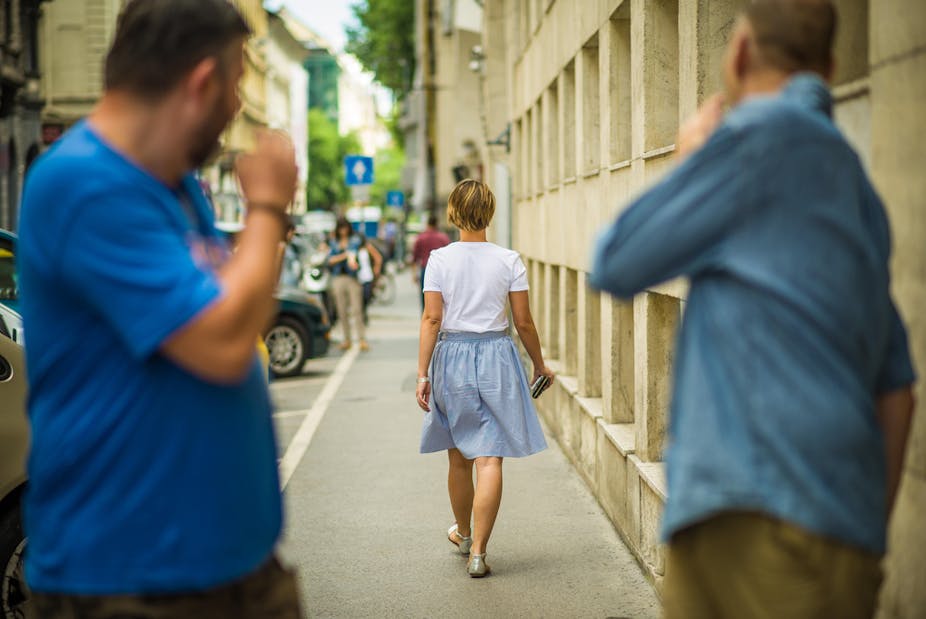I was walking … to school on my own … all of a sudden this car drove by on the main road and some guy stopped at the red light, wound down his window, stuck his head out and started whistling at me.
This is an account by an 11-year-old girl of everyday sexism and harrassment – and there are countless others like it. But few children or young people know what to do if they are whistled at, beeped at or stared at when they are out and about in public.
“Street harassment” is defined by the activist group Hollaback! as unwelcome comments, gestures and incidents in public, including on public transport. For those who experience it, walking to school, going out with friends, and using the bus, tram, train or tube can become extremely stressful. Children and young people can worry about going out in public. They can even think that something is wrong with them.
What can be done?
There are some, if limited, reporting options for children and young people who experience street harassment. But it is unlikely that such an incident could be successfully prosecuted under the current relevant UK law, the Public Order Act 1986.
And without reliable data, addressing the problem is difficult. Incidents in an area where misogyny is treated by police as a hate crime, such as the English county of Nottinghamshire, can be reported to the police by female children and young people, but this excludes males. It also excludes children and young people who might prefer to categorise their gender as male.
Despite such local anomalies, however, street harassment is not recorded as a crime against young people in the UK more generally. Sometimes the only option is to write up experiences on the Everyday Sexism Project website – although, again, this tends to be used by females.
To further explore the extent and potential harm of street harassment, five researchers at the Nottingham Centre for Children, Young People and Families, based at Nottingham Trent University, asked secondary school students about street harassment incidents. Although the study is in the early stages it is already providing an insight into the problem.
Anyone, anywhere, at any time
Street harassment can be experienced by anyone, anywhere and at any time. It doesn’t seem to matter if young people are wearing school uniform, are out at the weekend, on their own or in a group. Street harassment can also be accompanied by some very mixed, and often negative feelings.
Experiencing street harassment as a child or a young person can have a lasting impact on personal confidence into adulthood and this highlights the potential harm of experiencing incidents when young.
It is important that the harmful impact of street harassment is made known. It might seem trivial to whistle at or call out names to a group of youngsters, or beep a car horn at a young boy and give him the V-sign when he turns around. Yet these and other incidents have the potential to cause confusion, self-doubt, panic, fear and shock.
Managing experiences of street harassment might include talking things through with trusted adults such as parents, family members or teachers. Yet children and young people can worry that nobody will take them seriously, or think their experiences don’t matter.
Effectively criminalising street harassment of children and young people could make a real difference. It would send a clear message that street harassment of the young is unacceptable. It would also help protect the next generation.
Children and young people want and need the right to go out in public and not to worry about being harassed. Growing up should not have to include dealing with this pernicious and persistent problem.

